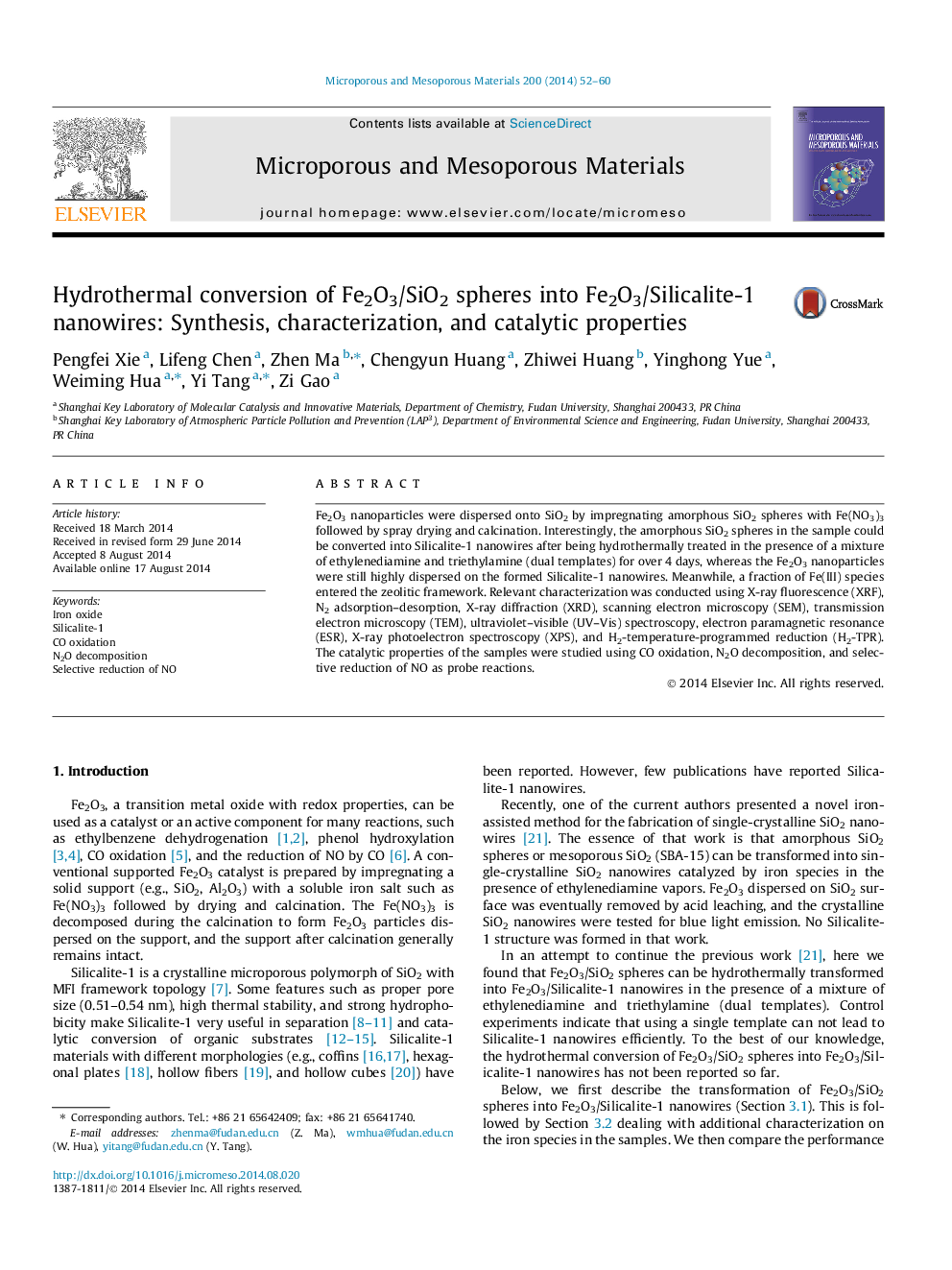| Article ID | Journal | Published Year | Pages | File Type |
|---|---|---|---|---|
| 72685 | Microporous and Mesoporous Materials | 2014 | 9 Pages |
•Fe2O3/SiO2 spheres can be transformed into Fe2O3/Silicalite-1 nanowires.•Hydrothermal treatment in ethylenediamine-triethylamine mixture is important.•The transformation and properties were systematically characterized.•CO oxidation, N2O decomposition, and NH3-SCR were used as probe reactions.
Fe2O3 nanoparticles were dispersed onto SiO2 by impregnating amorphous SiO2 spheres with Fe(NO3)3 followed by spray drying and calcination. Interestingly, the amorphous SiO2 spheres in the sample could be converted into Silicalite-1 nanowires after being hydrothermally treated in the presence of a mixture of ethylenediamine and triethylamine (dual templates) for over 4 days, whereas the Fe2O3 nanoparticles were still highly dispersed on the formed Silicalite-1 nanowires. Meanwhile, a fraction of Fe(III) species entered the zeolitic framework. Relevant characterization was conducted using X-ray fluorescence (XRF), N2 adsorption–desorption, X-ray diffraction (XRD), scanning electron microscopy (SEM), transmission electron microscopy (TEM), ultraviolet–visible (UV–Vis) spectroscopy, electron paramagnetic resonance (ESR), X-ray photoelectron spectroscopy (XPS), and H2-temperature-programmed reduction (H2-TPR). The catalytic properties of the samples were studied using CO oxidation, N2O decomposition, and selective reduction of NO as probe reactions.
Graphical abstractFigure optionsDownload full-size imageDownload as PowerPoint slide
